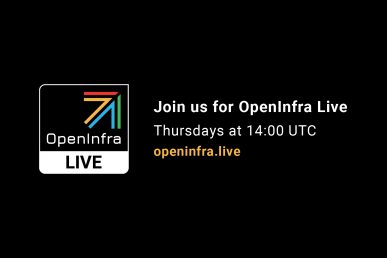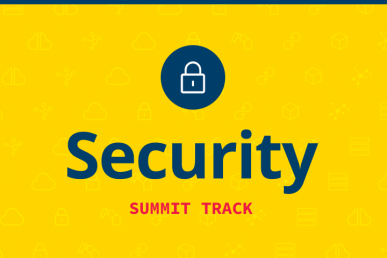In 2019, the term “digital sovereignty” gained momentum in Europe. For the first time in history, several ministries such as the German and French ministries for Economic Affairs pushed forward initiatives to establish digital sovereignty.
At the Open Infrastructure Summit keynotes, Johan Christenson, CEO of City Network, discussed the importance of digital sovereignty in the infrastructure world. Christenson mentioned that on July 16th 2020, the Court of Justice of the European Union invalidated “Privacy Shield”, which means companies seeking to transfer personal data from the European Economic Area to the United States must now use other mechanisms recognized by General Data Protection Regulation (GDPR) to appropriately safeguard personal data.
“As Europe grapples with an ever more centralized cloud-world and lack of true choice in providers, new initiatives are surging like GAIA-X. Europe is looking to have vendors whom can support both its values and laws in the infrastructure layer.” Christenson said. Therefore, digital sovereignty is becoming critically important from both the aspects of achieving digital independence and the long-term innovation for Europe as a whole.
But, what exactly is digital sovereignty? Why is open infrastructure important to achieve digital sovereignty? What is the European initiative GAIA-X project and how is it leveraging open infrastructure for its use case? In this article, we will focus on what digital sovereignty is and why open infrastructure matters, from the talk that Marius Feldmann, Chief Operation Officer of Cloud&Heat Technologies, and Kurt Garloff, leading the Sovereign Cloud Stack (SCS) initiative, delivered—Digital Sovereignty Why Open Infrastructure Matters—at the Open Infrastructure Summit.
“Digital sovereignty is about sovereignty, not about autarky.”
It’s easy to confuse digital sovereignty with digital autarky, and they are completely different concepts. Digital sovereignty is about integrating the rising and existing technologies and innovative ideas into an overall system and adding its own solutions in order to have the freedom of choice among different options that exist.
“Sovereignty matters – for sovereignty you need control and choice.”
Just like Feldmann discussed in his Summit session, “digital sovereignty is built on freedom of choice.” Consumers should have particularly effective freedom of choice when they become the “active managers” of their own data (Digital Sovereignty Report by the Advisory Council for Consumer Affairs, 2017).
But what are the essential preconditions to achieve having the freedom of choice in digital sovereignty? One of the most important preconditions is that alternatives should be available to achieve the freedom of choice. In addition, the alternatives must differ regarding their functional and non-function properties. It’s also fundamentally important that discovery based on these properties must be rendered possible, which means there should be possibilities and means to discover the digital services that are offered based on the properties.
European Initiative GAIA-X
With the aim to develop common requirements for a European data infrastructure, GAIA-X is a project that has been initiated by the German ministry for economy and energy. Currently, hundreds of companies worldwide work together on GAIA-X to push forward the overall vision of digital sovereignty.
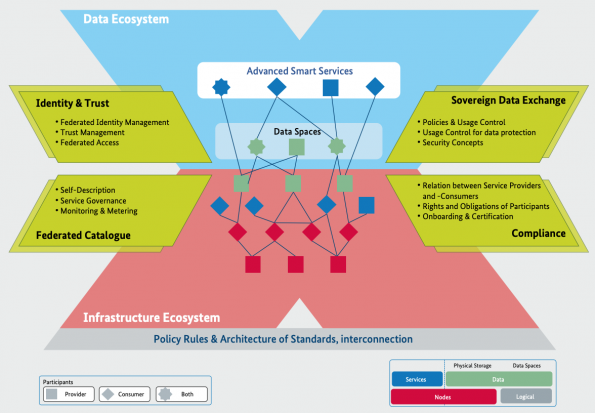
“A strong open infrastructure ecosystem is the foundation of digital sovereignty” (GAIA-X: Technical Architecture, June 2020).
GAIA-X aims to develop common requirements for a European data infrastructure. Therefore openness, transparency and the ability to connect to other European countries are central to GAIA-X. This project is the cradle of an open, transparent digital ecosystem, where data and services can be made available, collated and shared in an environment of trust. Read more about GAIA-X on GAIA-X: Technical Architecture document.
Towards Decentralization
To further explain what it needs to achieve digital sovereignty, let’s assume a heterogeneous / distributed ecosystem as the foundation for a digital sovereign future.
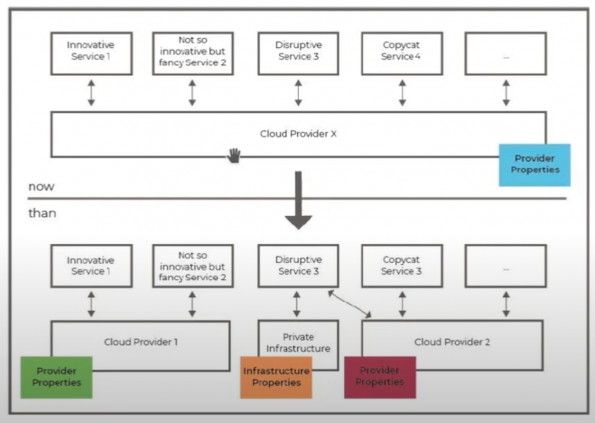
Without having heterogeneous and decentralized infrastructure, there is no freedom of choice. Therefore, Having various providers and decentralized infrastructures is key to digital sovereignty. Feldmann summarized it well that
“Future digital infrastructures are not monolithic and centralized but highly distributed and heterogeneous regarding their properties.”
However, to avoid a potential drawback of this future digital infrastructure, which is having various APIs to achieve mainly the same things on the infrastructure side, there should be a standardized API for all the cloud providers. Therefore, on one hand, the future digital infrastructures should be heterogeneous in order to have alternatives available due to the different properties. On the other hand, there should be standards for the API and for the platform itself.
To clarify, when talking about standardized APIs as well as standardized tools to make an infrastructure platform operational, Feldmann was only talking about the software layer for commodity (compute, storage, networking). There is no need for many alternatives on this layer. The commodity layer should leverage open infrastructure projects to render possible collaborative development and to avoid API fragmentation.
“Open Infrastructure is bridging the chasm on the commodity layer.”
Reinventing the wheel on the commodity layer may be an interesting exercise; however, it slows down innovative and technical progress.
On the path towards digital sovereignty, on one hand, it is crucial to provide a modular open infrastructure solution that renders it possible to enable various actors to set up an operational platform for hosting services quickly. On the other hand, open infrastructure projects should reduce development overhead and should ensure API interoperability in order to avoid vendor-lock-in contradicting the freedom of choice.
Just like what Christenson said, “open source is the only realistic way to a solid choice in vendors. Open source is also the foundation for Europe’s long term innovation and sovereignty in anything data.”
Get Involved
This article is a summary of the Open Infrastructure Summit session, Digital Sovereignty – Why Open Infrastructure Matters.
Watch more Summit session videos like this on the Open Infrastructure Foundation YouTube channel. Don’t forget to join the global Open Infrastructure community, and share your own personal open source stories using the hashtag, #WeAreOpenInfra, on Twitter and Facebook.
Thanks to the 2020 Open Infrastructure Summit sponsors for making the event possible:=
Headline: Canonical (ubuntu), Huawei, VEXXHOST
Premier: Cisco, Tencent Cloud
Exhibitor: InMotion Hosting, Mirantis, Red Hat, Trilio, VanillaStack, ZTE
- Demystifying Confidential Containers with a Live Kata Containers Demo - July 13, 2023
- OpenInfra Summit Vancouver Recap: 50 things You Need to Know - June 16, 2023
- Congratulations to the 2023 Superuser Awards Winner: Bloomberg - June 13, 2023

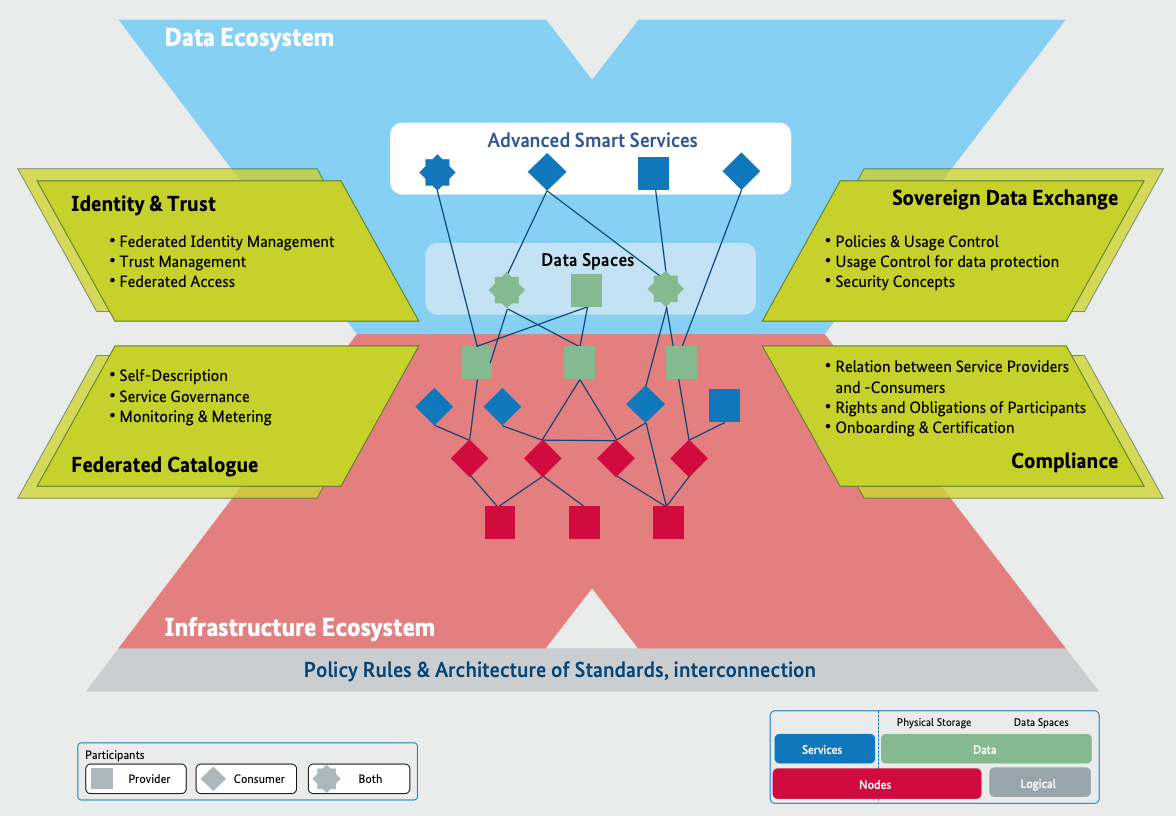)




